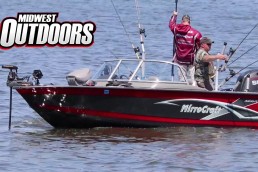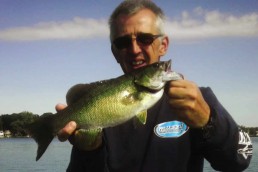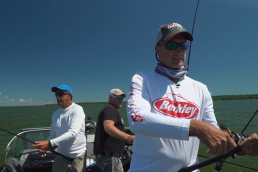Find the Green, Find the Fish
SHARE THIS POST
Several falls ago, I experienced my best fall of fishing, and some of the best overall fishing of my entire career, by fishing a small shallow lake near my home. This particular lake is river fed, has dark, dingy water and, although the weeds don’t grow that deep, they are very thick where they do grow.
On a mid-October day that fall, I drifted along a weed line, holding the boat holding in about 7 feet of water, when a walleye ate the jig and minnow combination that was dragging behind the boat. I landed the fish, rebaited, and quickly repositioned the boat for another pass over the spot the fish had come from. That pass resulted in another 17-inch walleye in my net. The next two passes produced similar results.
Realizing I had found a hot spot, I used the anchor mode on my trolling motor to hold the boat in place—a bit out from where the fish were holding—and started pitching a light jig and fathead minnow to the productive spot. Over two dozen walleyes were caught—and most released—that day.
Subsequent trips to that spot produced similar catches and, in fact, I used the spot to guide groups of late-season guide clients to good catches. The fishing stayed good well into late fall. I remember that my last day of fishing the hotspot was November 20, and that I had to dodge ice chunks on my way to and from the fish.
What made this spot so productive? Simply put, the area had a patch of weeds—some cabbage weeds, and some of what I call “junk weeds,” for lack of a better term. What made these weeds especially appealing, however, was that they were green, still living—and stayed that way late into the season. Green, living weeds not only provide good cover for fish during fall, but the oxygen they give off draws baitfish, which makes them even more appealing!
Are you enjoying this post?
You can be among the first to get the latest info on where to go, what to use and how to use it!
Interestingly, as fall progressed, the walleyes had to “share” the spot with other fish, such as big northern pike. Some lunker largemouth bass were caught from the area, too.
Even more interesting is that this is an easy pattern to duplicate. By staying on the move and using today’s sonar technologies, we can now “see” off to the sides of our boats and identify weeds. A quick cast or two will often tell us the state of that vegetation, and whether it deserves some fishing attention or should be skipped in favor of further searching. Using this process of elimination, anglers can often find green, living weeds and the walleye gold that lives in them.
In conclusion, if finding walleye gold is a goal of yours yet this fall, consider a trip to the weeds of your favorite lake, as that trip just might reward you with the season’s best fishing.
Good luck in your search, and remember to include a youngster in your next outdoors adventure!
MWO
SHARE THIS POST
Did you enjoy this post?
You can be among the first to get the latest info on where to go, what to use and how to use it!
Mike Frisch
Mike Frisch is a lifelong angler who has been guiding anglers in western Minnesota for nearly three decades. Mike co-hosts the popular Fishing the Midwest television series and co-founded School of Fish, a leading fishing education program. Learn more by visiting fishingthemidwest.com or following “Fishing the Midwest” on Facebook.



